
Orchids are able to surprise with their visual beauty. However, improper care leads to insufficiently active development of the plant, improper and weak peduncle. Being interested in why leaves crack on an orchid, it is advisable to carefully observe the peculiarities of caring for the plant and understand how best to maintain its good and healthy condition.
Orchids are one of the most beautiful plants. However, elementary violations of flower care threaten not only potential problems with incorrect or insufficiently active development, but also violations of the integrity of the plant. For example, there is often a need to find out why the orchid is cracking leaves and how best to deal with such a problem.
Content
Why do orchids crack leaves, reasons
Various causes cause cracks in the leaves of the orchid, but in each case, care must be taken to identify the causes in a timely manner to prevent further problems.
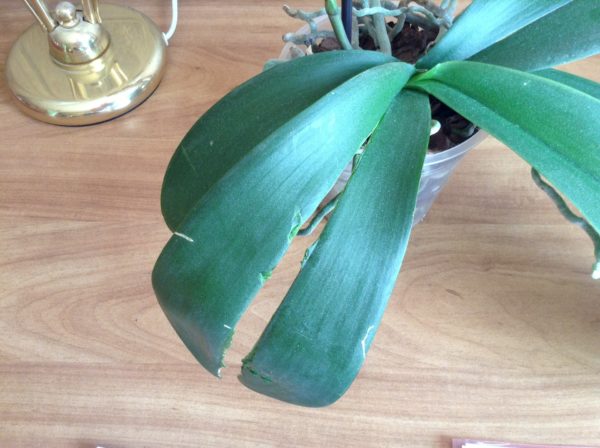
Overdried root system
The lack of watering leads to the fact that the orchid becomes overdried. This phenomenon is quite common in the summer. You can understand that the plant is trying to take moisture not from dry earth, but from the leaves.
The only possible solution to the existing problem is a mandatory and urgent watering of the flower. At the same time, an excess of moisture, it turns out, is dangerous for the orchid. You can not water the plant only once every few days, and even more so - in 2 - 3 weeks. Otherwise, the appearance of small damages on the sheets is completely justified.
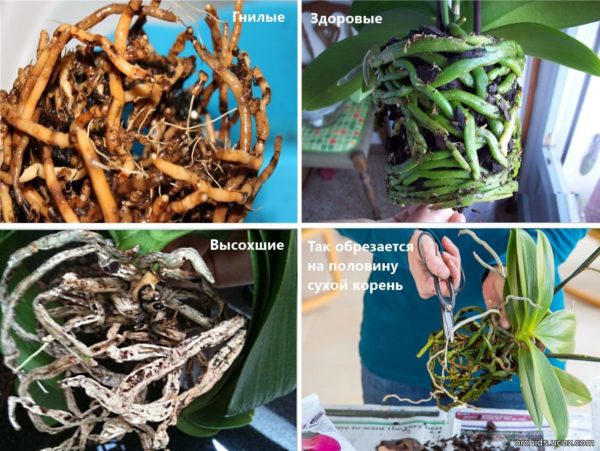
Tropical flowers always absorb and evaporate moisture. The evaporation rate is different, as it depends on humidity, temperature, lighting characteristics. For example, bright lighting and high temperatures, low humidity significantly accelerate the evaporation of the liquid, so the orchid suffers from a lack of watering. Being interested in why the orchid leaves crack in half, it is recommended to analyze the state of the root system. If a lack of moisture is detected, the bush is sprayed with warm water and an air humidifier is used.
Mechanical damage to orchids
Fact! Orchids usually have strong and leathery leaves that can burst due to mechanical factors. For example, the sheet could be bent if pressed or pinched. Mechanical factors also cause damage in the middle of the platinum sheet.
Additional actions in such cases are not required. If the leaf surface does not bifurcate, the leaf wound is covered with mechanical tissue, which will allow the plant to continue its vegetative existence. Otherwise, you need to wipe the orchid with a special antiseptic.
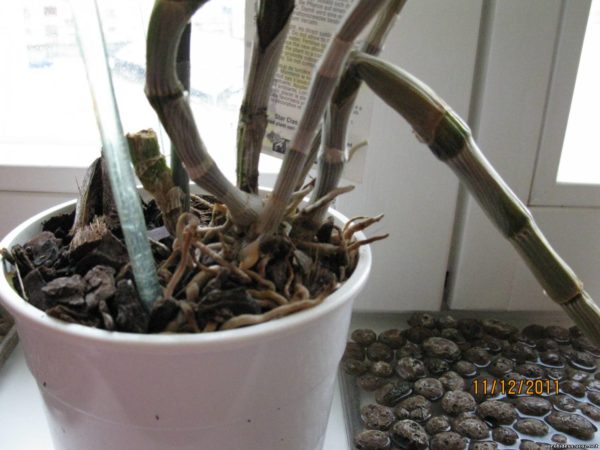
Incorrect orchid placement
Advice! In the hot season, it is advisable to put the orchid in a dark place.Bright sun rays, which lead to the negative influence of heat, contribute to the fact that moisture evaporates quickly and the vital activity of the plant is disturbed. In addition, the ultraviolet light of the sun leads to a decrease in the mechanical density of the flower, as a result of which the leaves bifurcate in the central part.
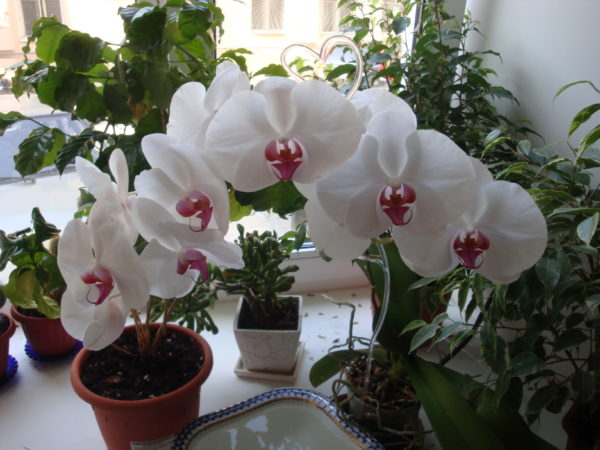
A small amount of orchid roots
Diseases and incorrect transplants lead to a weakening of the root system of the orchid. As a result, a small number of roots is insufficient for feeding orchids with nutrients. Lack of nutrition leads to the fact that the plates crack and burst.
In this situation, you will have to come to terms with a root system that is not strong enough and cut a few sheets to reduce the load on the root system, as the roots could dry out or rot due to improper care of the plant. As a result, the orchid will not be able to fully develop, so it is advisable to transplant the plant. For medicinal purposes, orchid leaves are wiped with a cotton swab previously moistened in ordinary water or in succinic acid.
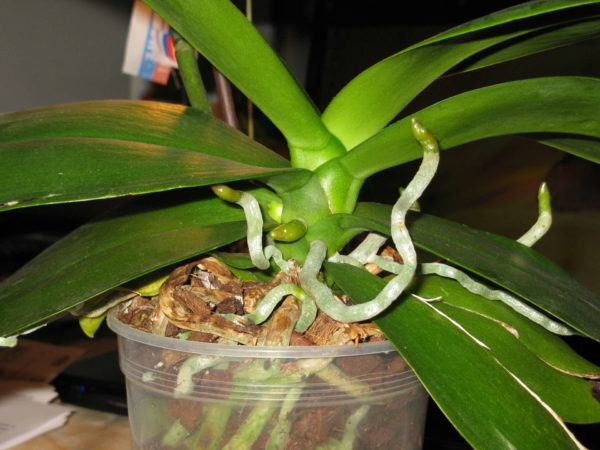
Sudden temperature drop
Temperature fluctuations (more than 5 degrees) lead to weakening of orchid leaves, so they crack and break off.
Sudden temperature changes also lead to the following undesirable orchid changes:
- dropping petals;
- slow growing vegetative mass
- yellow and fading leaves.
To improve the condition of the orchid, it is desirable to achieve a constant temperature regime.
Wrong orchid watering (excess or deficiency)
Orchids are vulnerable to watering conditions. Excess and lack of watering leads to a change in the state of the plant. It is not surprising that many gardeners are wondering why the leaves of an orchid crack in the middle of the leaf and cannot normalize the watering process.
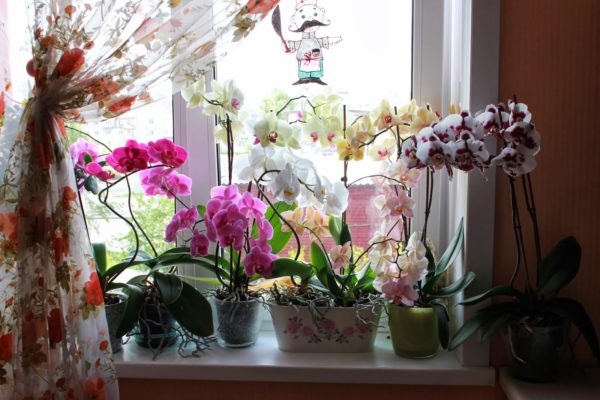
Excess moisture leads to the fact that water will remain at the very bottom of the pot. As a result, the root system will begin to rot and the plant may die. If you use a pot with holes, excess water will quietly drain. When transplanting an orchid, it is advisable to pour a couple of centimeters of expanded clay, as it can absorb the remaining water after irrigation to protect the root system. To transfer orchids in large pots is easier than in small ones.
You can’t change the pots because of fear of disturbing watering the orchid. The frequency of watering depends on air temperature, humidity level, lighting characteristics, pot size and type of orchid, substrate used. For this reason, it is advisable to take care to understand which watering regimen is most suitable for an orchid.
It is advisable to take into account the following aspects:
- lack of substrate leads to the fact that the earth will dry out quickly enough;
- plants with a developed root system quickly absorb moisture from the soil;
- some varieties of orchids need periods of rest, involving a decrease in air temperature and rare watering;
- some varieties of orchids are advisable only to spray.
Careful monitoring of orchids allows you to understand how to better adjust the watering regime.
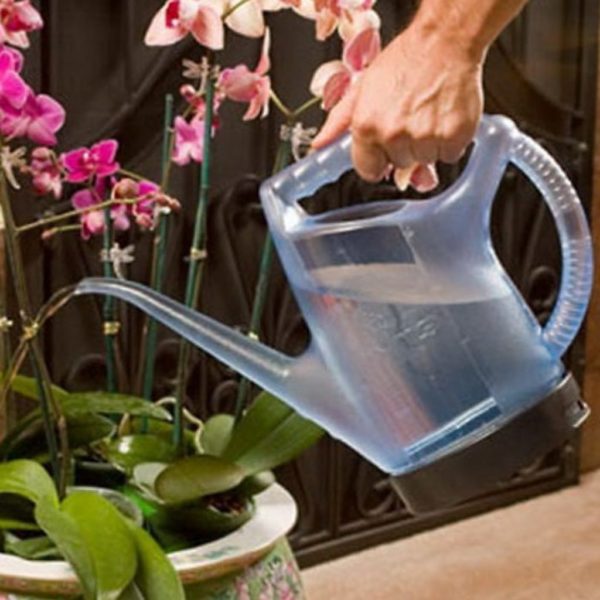
Incorrect fertilizer application
Often, gardeners try to understand why the leaves of an orchid burst and what to do with such a problem. Improper fertilizer (excess or insufficient) also poses undesirable problems.
- Excess fertilizer
Excessive mineral supplements can cause orchid problems. Usually the plant independently regulates the need for water, therefore, special control is required when caring for the plant. Mineral fertilizers disrupt the flow of water in the flower, so it is advisable to avoid waterlogged soil and to fertilize only when appropriate.
- Lack of fertilizer
If the leaves crack on the orchid, what to do when identifying the cause of the problem is extremely important to understand. Timely actions taken determine the possibility of further proper care of the orchid.

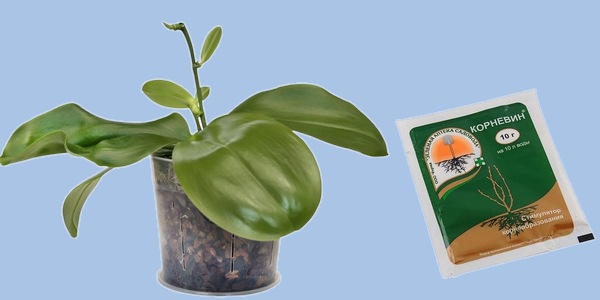
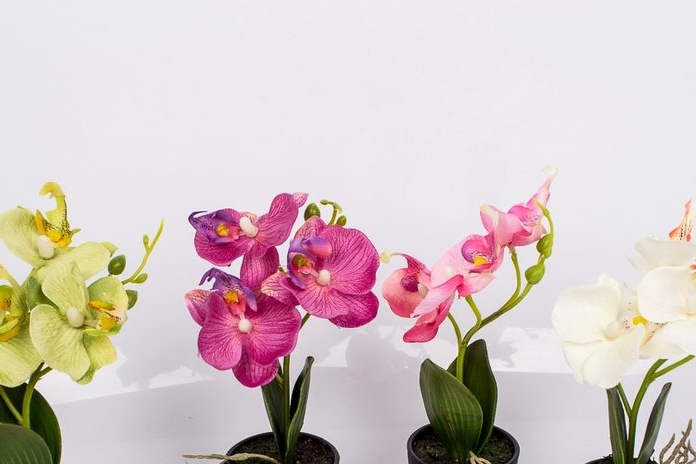
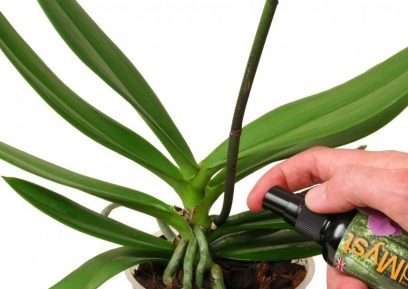
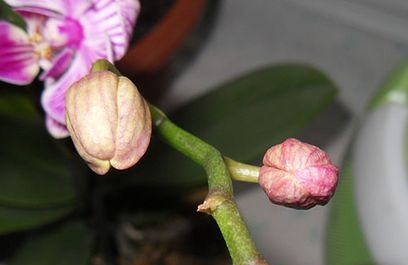 Reasons why orchids fall flowers and what to do
Reasons why orchids fall flowers and what to do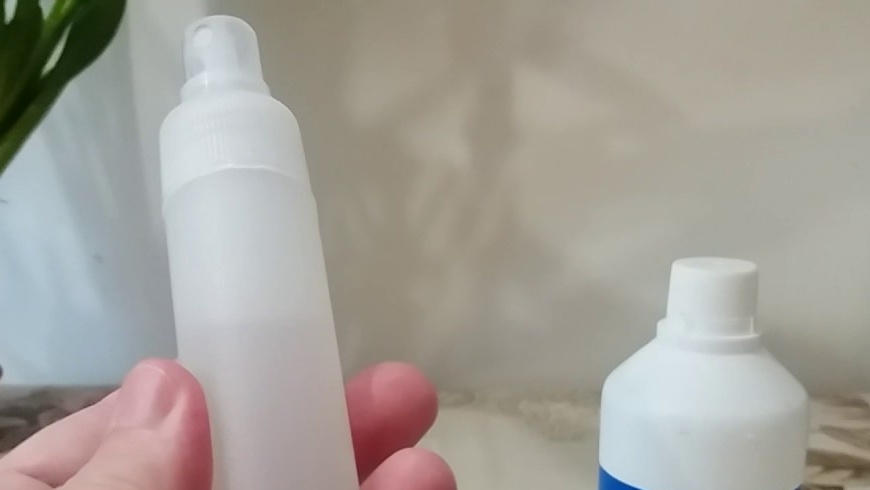 How to use hydrogen peroxide for orchids and why
How to use hydrogen peroxide for orchids and why Midges are wound up in the orchid: effective ways to get rid
Midges are wound up in the orchid: effective ways to get rid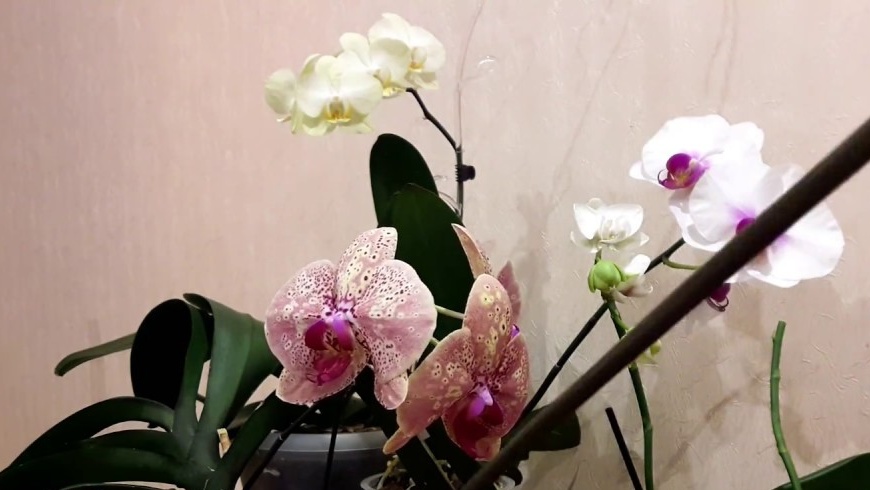 Is it possible to transplant an orchid during flowering
Is it possible to transplant an orchid during flowering